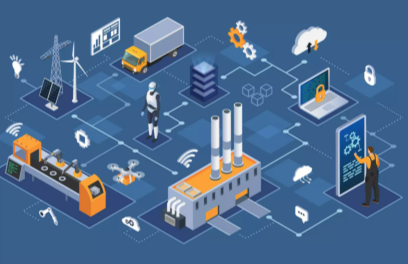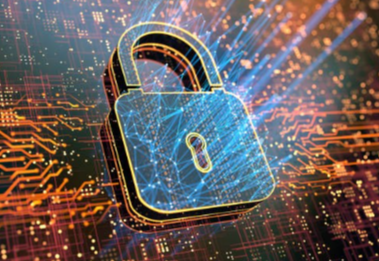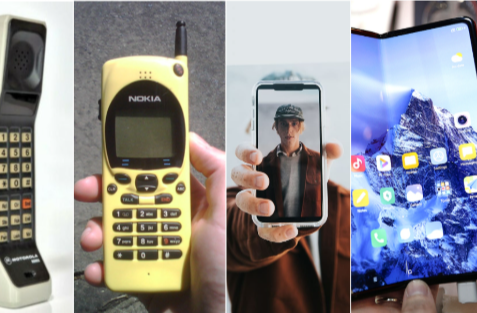IoT devices are revolutionizing the concept of smart cities by facilitating seamless communication between urban systems. These technologies collect and analyze data in real time, leading to improved traffic management, energy efficiency, and enhanced public safety. As cities integrate these solutions, they unlock new possibilities for operational efficiency and sustainability. However, the full impact of this transformation is still unfolding, raising questions about the future of urban living and citizen engagement.
Enhancing Traffic Management With Iot Solutions
The integration of Internet of Things (IoT) solutions into traffic management systems is revolutionizing urban mobility. By leveraging smart traffic technologies, cities can gather real-time analytics on vehicle flow, congestion patterns, and public transportation efficiency.
This data-driven approach allows for adaptive traffic signals, reducing delays and enhancing the overall commuter experience. Moreover, IoT systems facilitate seamless communication between vehicles and infrastructure, enabling smarter route planning and promoting safer driving behaviors.
The potential for reduced travel times and improved air quality empowers citizens to reclaim their time and freedom in bustling urban environments. As cities increasingly adopt IoT solutions, the vision of efficient, responsive traffic management becomes a tangible reality, fostering a more liberated and dynamic urban lifestyle.
Improving Energy Efficiency in Urban Environments
As cities strive to become more sustainable, integrating IoT technologies plays a crucial role in enhancing energy efficiency within urban environments.
Smart grids, empowered by IoT devices, facilitate real-time monitoring and management of energy consumption, allowing for optimized distribution and reduced waste. By integrating renewable energy sources, such as solar and wind, cities can create a resilient energy infrastructure that minimizes reliance on fossil fuels.
IoT sensors can track energy usage patterns, enabling predictive analytics that inform users of peak consumption times and encourage energy-saving practices. Furthermore, automated systems can adjust energy outputs based on demand, ensuring a balanced energy flow.
Ultimately, this synergy between smart grids and renewable integration not only promotes sustainability but also empowers citizens to make informed energy choices.
Boosting Public Safety Through Connected Technologies
While urban areas continue to expand, the integration of connected technologies through the Internet of Things (IoT) has emerged as a pivotal strategy for enhancing public safety.
Smart surveillance systems, equipped with advanced analytics and real-time monitoring capabilities, enable law enforcement to respond swiftly to incidents. These interconnected devices not only provide comprehensive coverage of public spaces but also utilize data to predict potential threats, thereby preventing crime before it occurs.
Additionally, IoT facilitates seamless communication between emergency response teams, ensuring they receive critical information promptly. This real-time data exchange enhances situational awareness, allowing responders to allocate resources effectively.
As cities embrace these technologies, they foster safer environments, empowering citizens to enjoy greater freedom within their communities.
Read more: The Evolution of Mobile Technology Over the Decades
Streamlining Waste Management Processes
To effectively manage increasing waste in urban environments, cities are turning to IoT technologies that streamline waste management processes.
Smart bins equipped with sensors can monitor waste levels in real-time, enabling efficient collection schedules that reduce operational costs and environmental impact.
By integrating predictive analytics, municipalities can forecast waste generation patterns, ensuring that resources are allocated optimally.
This data-driven approach not only enhances the efficiency of waste collection but also empowers citizens to engage in sustainable practices.
As cities embrace these innovations, they foster cleaner environments and improve public health.
Ultimately, the synergy between smart bins and predictive analytics represents a significant leap towards creating more sustainable and responsive urban ecosystems, granting cities greater freedom in managing their waste challenges.
Conclusion
As IoT devices weave a digital tapestry across urban landscapes, they illuminate the pathways to smarter cities. Each interconnected node symbolizes a thread in the fabric of efficiency and sustainability, where traffic flows seamlessly like a well-orchestrated symphony, energy is conserved like precious water in a drought, and public safety is fortified like a sturdy fortress. In this evolving environment, the potential of IoT technologies transforms urban life, crafting a brighter, more responsive future for all citizens.



